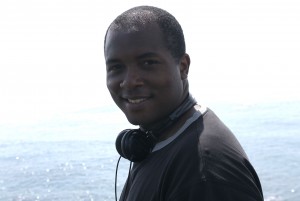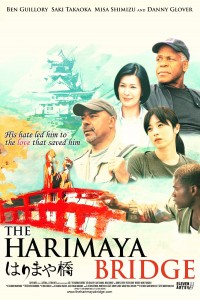 The below article is taken from the JETAA UK‘s excellent website. The author is Vanessa Villalobos who serves as JETAA UK’s Communications Officer and who is also the founder and publisher of JapaneseLondon.com, a lively and helpful website dedicated to all things Japanese within London.
The below article is taken from the JETAA UK‘s excellent website. The author is Vanessa Villalobos who serves as JETAA UK’s Communications Officer and who is also the founder and publisher of JapaneseLondon.com, a lively and helpful website dedicated to all things Japanese within London.
When I returned to the UK after 3 years on the JET Programme I was, at first, concerned that JET had effectively ruined my career prospects. In Japan, it seemed, I had developed a rather different kind of approach to work than my non-travelling peers. Years later, I now see how brilliantly my experience in Japan prepared me to start out on my own…
In fact, I now firmly believe that the unique characteristics of the JET programme provide entrepreneurial types with a solid, practical advantage by honing their unique skills. Just to clarify, by ‘entrepreneurs’ I mean any freelancers, sole-traders, business owners, designers, artists, journalists, writers, bloggers, online workers, general creative types, consultants, and career 2.0 designers. JET sets you up to blast off! And here are my top 5 reasons why:
1) JETs are Risk-Takers
The JET Programme attracts people who don’t mind jetting off (do excuse the puns) on a year’s non-negotiable contract with very little idea what they are getting into, having had very little choice in where they were placed. It’s a plunge into the unknown; developing our innate trust that everything will somehow just be OK. Whether we are suddenly starring in a festival that starts in 5 minutes, or singing our unrehearsed rendition of the national anthem on stage in front of 500 people, JETs learn to rise to any occasion with a certain outlandish confidence. Crucial for business success is this same appetite for adventure: the ability to launch into something new and remain flexible as to how it develops.
2) The JET Programme Imparts a Sense of Responsibility
JETs are people who make things happen. From the word go, most JETs understand that their experience in Japan will be created by their own efforts. JETs have a special opportunity to [CLICK HERE to read the rest of the article on the JETAA UK site.]
WIT Life #134: Versatile veggies
WITLife is a periodic series written by professional Writer/Interpreter/Translator Stacy Smith (Kumamoto-ken CIR, 2000-03). She starts her day by watching Fujisankei’s newscast in Japanese, and here she shares some of the interesting tidbits and trends together with her own observations.
Last night I was happy to be able to attend an event at Japan Society called Field to Table: The Role of Vegetables in the Japanese Diet. The featured speakers were Japanese food culture expert Elizabeth Andoh and Masato Nishihara, executive chef at Kajitsu, the only restaurant in NYC to feature 精進料理 (shouijn ryouri), a vegetarian cuisine introduced to Japan from China in the 13th century by Zen monks who had returned from studying Buddhism there.
I had met both of the speakers before, Elizabeth when I lived in Tokyo where she resides, and Nishihara-san when I interpreted for him at a food event last year. They offered their expertise regarding Read More
WITLife is a periodic series written by professional Writer/Interpreter/Translator Stacy Smith (Kumamoto-ken CIR, 2000-03). She starts her day by watching Fujisankei’s newscast in Japanese, and here she shares some of the interesting tidbits and trends together with her own observations.
Many readers probably caught yesterday’s NYT cover story with the headline “Japan Goes from Dynamic to Disheartened.” This article (“Coping with Decline”) is the first in a series called The Great Deflation which will “examine the effects on Japanese society of two decades of economic stagnation and declining prices.” Throughout the article all those quoted mention a “lack of vigor/vitality” (I assume this was a translation of 元気がない (genki ga nai)). Read More
WIT Life #132: Kwaidan
WITLife is a periodic series written by professional Writer/Interpreter/Translator Stacy Smith (Kumamoto-ken CIR, 2000-03). She starts her day by watching Fujisankei’s newscast in Japanese, and here she shares some of the interesting tidbits and trends together with her own observations.
Last night kicked off Japan Society’s current “Zen and Its Opposite” Monthly Classic Film Series, which features films from the late ’50s to ’60s that showcase the paradoxical unity of zen and violence. It began with the 1965 film 怪談 (Kwaidan or Kaidan), said to be the most expensive production of its time. It clocks in at a whopping 161 minutes and although the pacing is slow at certain points, the suspense draws you in and keeps you on the edge of your seat for most of it. Kwaidan is comprised of four separate stories, each haunting in its own way. My favorite was Read More
WIT Life #131: Asian Collaboration
*****************************************************************************
WITLife is a periodic series written by professional Writer/Interpreter/Translator Stacy Smith (Kumamoto-ken CIR, 2000-03). She starts her day by watching Fujisankei’s newscast in Japanese, and here she shares some of the interesting tidbits and trends together with her own observations.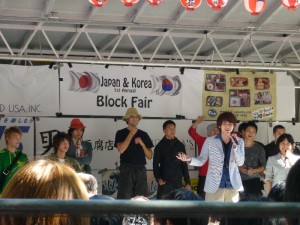
Yesterday I attended the first ever Japan & Korea Block Fair, which was held on Broadway between 93rd and 94th streets. It was sandwiched between other festivals offering your standard street fare of zeppoles and gyros, but the Asian section seemed to be getting the most foot traffic. One side featured Japanese food such as okonomiyaki and yakitori, and the other had Korean food like bulgolgi and kimchi.
My friend and I shared many different samples, but my favorite was Read More
Sake World e-Newsletter by John Gauntner (October 2010)
 The October 2010 issue of the Sake World E-mail Newsletter by JET alum and leading sake expert John Gauntner (aka “The Sake Guy”) is now available online. In this issue:
The October 2010 issue of the Sake World E-mail Newsletter by JET alum and leading sake expert John Gauntner (aka “The Sake Guy”) is now available online. In this issue:
1. Greetings: Happy Sake Day!
2. Toji Today: The State of the Artists
3. Did You Know? Start with the rougher stuff
4. Sake Basics: Sake Temperatures
5. Announcements and Events: Sake Professional Course in Portland and a new sake educational blog
6. Sake Education Central
Additional Links:
WIT Life #130: Nobel Prize honors
WITLife is a periodic series written by professional Writer/Interpreter/Translator Stacy Smith (Kumamoto-ken CIR, 2000-03). She starts her day by watching Fujisankei’s newscast in Japanese, and here she shares some of the interesting tidbits and trends together with her own observations.
Japanese professors 75-year old Eichi Negishi of Purdue University and 80-year old Akira Suzuki of Hokkaido University received news this week that they had won the $1.5 million 2010 Nobel Prize in Chemistry for their work on organic synthesis. This chemical method allows scientists to test cancer drugs and make thinner computer screens, and it is one of the most sophisticated tools available today. They share this honor with 79-year old American Richard Heck of the University of Delaware, but the three recipients worked entirely independently of each other, an unusual situation for joint winners.
Negishi shared that he started dreaming about winning the prize when Read More
Second Volume of JET-inspired Graphic Novel Now Available
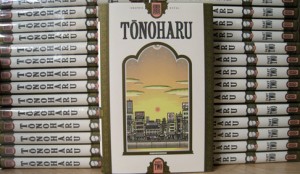 JET alum/cartoonist Lars Martinson (Fukuoka-ken 2003-2006) has this to share:
JET alum/cartoonist Lars Martinson (Fukuoka-ken 2003-2006) has this to share:
“I just got copies of my second graphic novel Tonoharu: Part Two back from the bindery. The book won’t be available in stores until next month, but I’m selling them on my website right now if anyone’s interested.”
A link to order the book, as well as information about Tonoharu: Part One and Two, can be found here:
Click here to see previous JetWit posts about Tonoharu: Part Two and Tonoharu: Part 1.
JET alums at Japan Writers Conference in Tokyo
 The 4th annual Japan Writers Conference will be held Oct. 10-11 in Tokyo with 30 writers giving 50-minute presentations about the artistic and business sides of their respective fields, which inlcude fiction, poetry, journalism and even EFL textbook writing. At least four of the presenters are former JETs.
The 4th annual Japan Writers Conference will be held Oct. 10-11 in Tokyo with 30 writers giving 50-minute presentations about the artistic and business sides of their respective fields, which inlcude fiction, poetry, journalism and even EFL textbook writing. At least four of the presenters are former JETs.
The venue is the Ekoda Campus of Nihon University College of Art. You can find full details by visiting http://www.japanwritersconference.org/or following the event on Twitter via http://twitter.com/JapanWritersCon
Here are some slightly shortened versions of the official descriptions of presentations to be made by JET alums:
DWAYNE LIVELY (Niigata-ken, 1996-99) “My Freeware Life.”
The lecture focuses on my experiments with various freeware writing programs, some of which promise to help improve the writing process. The first part of the lecture introduces a number of freeware writing programs that have been suggested by and/or designed by fellow writers. I will explain the results of my experiments with each program and will demonstrate how easy, or not, they are to use, how they changed my writing process and whether or not I intend to keep using them. Next, I will describe what happened when I attempted to follow a handful of “how to write a novel” plans offered free online. Finally, I will introduce the moral if the lecture, including what I learned and what I managed to accomplish during all the experiments.
Dwayne Lively’s fiction has appeared in Twister, Kansas Quarterly, and The MacGuffin. His non-fiction and reviews have appeared in Transitions Abroad, Literary Magazine Review and online at Notebookism.com. He has been a writer, teacher and editor for the better part of 20 years and worked and taught in Japan, the USA and Albania. In his dwindling free time he’s been finishing up a novel and, on occasion, writing the online journal The Crazy Japan Times ( http://www.crazyjapan.com).
SUZANNE KAMATA (Tokushima-ken, 1988-90): “Marketing for Beginners.”
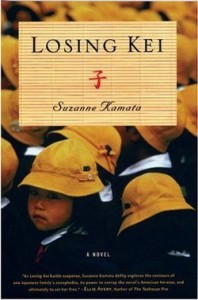 Getting your book into print is the easy part. Publishing it – making your work known to the public – takes a bit more effort. These days, writers are often expected to submit a marketing plan along with manuscripts, and most publishers expect writers to take an active role in marketing. So how do you market a book if you’re living in rural Japan, far from your target audience? Suzanne Kamata, author of five books with meagre advertising budgets, will suggest some easy, cheap, and not so obvious ways for expats to spread the word about their books.
Getting your book into print is the easy part. Publishing it – making your work known to the public – takes a bit more effort. These days, writers are often expected to submit a marketing plan along with manuscripts, and most publishers expect writers to take an active role in marketing. So how do you market a book if you’re living in rural Japan, far from your target audience? Suzanne Kamata, author of five books with meagre advertising budgets, will suggest some easy, cheap, and not so obvious ways for expats to spread the word about their books.
Suzanne Kamata again: “Kickstart Your Creativity”
Suzanne Kamata will lead participants in writing exercises meant to warm up the writer and/or kickstart creativity when the muse is absent. Bring a notebook and a writing implement.
Suzanne Kamata is the author of the novel Losing Kei (Leapfrog Press, 2008) and editor of three anthologies – Love You to Pieces: Creative Writers on Raising a Child with Special Needs (Beacon Press, May 2008) The Broken Bridge: Fiction from Expatriates in Literary Japan (Stone Bridge Press, 1997), and Call Me Okaasan: Adventures in Multicultural Mothering (Wyatt-Mackenzie Publishing, 2009). She also serves as fiction editor of the popular on-line journal literarymama.com from Tokushima, Japan, where she lives with her family.
TODD JAY LEONARD (1989-92): “So you want to publish an EFL textbook?–Four Points of View to Consider when Writing a Proposal–The Myths and Realities of EFL Publishing in Japan.”
Most likely, every language teacher in Japan has (at some point during his/her tenure) contemplated writing a textbook to fill a void in the market…in that constant search for the perfect, all encompassing textbook. What are publishers looking for in the current market? What appeals to editors who ultimately decide which titles go to production and which ones do not? What are the salespeople on the front lines hearing from their market base? What must an author do in order to get his/her book published? This presentation focuses on these very questions, offering inside insights from all the various points of view that must be considered when writing a proposal to publish a textbook–the publisher, the editor, the salesperson, and the author.
Todd Jay Leonard has been actively involved in book publishing for twenty years and has published twenty books. He lives, writes, and teaches on the southern island of Kyushu, where he is a university professor at Fukuoka University of Education. He has published extensively in academic journals, magazines and newspapers on cross-cultural, historical, and Teaching English as a Foreign Language (TEFL) themes.
TOM BAKER (Chiba-ken, 1989-91), “Interviewing Creative Subjects: Actors, Authors, Artists and Auteurs.”
Interviewing a creative subject requires thorough preparation to elicit original and interesting quotes. My talk will explain how to do the research, write the questions and conduct the interview. It will briefly touch on turning quotes into a story. A well-prepared interviewer will be familiar with the subject’s previous interviews, online self-expression and body of work. The interviewer will look for themes and connections in the work to ask probing questions about its meaning. The interviewer will prepare questions ranging from basic to technical to off-the-wall, but will use the list only as a guideline to the conversation. The interviewer will tolerate digressions (within reason) and allow thoughtful silences to bear fruit. The interviewer will look for local angles and connections to current events.
Tom Baker has been a staff writer for The Daily Yomiuri since 2001, and has interviewed Sylvester Stallone, Liv Tyler, Marlon Wayans, John Woo, Nicholas Sparks, Barry Eisler, Brian K. Vaughan, Michael Sowa and many others. He is a coauthor of Tokyo Chic and The Sushi Lover’s Cookbook.
Tom Baker covers the 2010 Tokyo Game Show
Tom Baker (Chiba-ken, 1989-91) is a staff writer for The Daily Yomiuri. As another example of JET ROI, he is one of at least four former JETS to have been on the newspaper’s staff in recent years. He usually writes for DYWeekend, the arts and leisure section. You can follow Tom’s blog at tokyotombaker.wordpress.com.
Earlier this month he covered the Tokyo Game Show, Japan’s biggest video game industry trade show. His story focused on new motion-sensing control systems from Sony and Microsoft, and also on innovative games by indie creators such as Minori Yokota (shown in the photo). Here is an excerpt:
Some of the freshest and most radically creative offerings at this year’s Tokyo Game Show were part of the Sense of Wonder night, a showcase for innovative indie games from Japan and overseas.
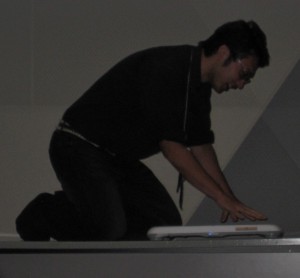 Minori Yokota, a graduate student at Kanagawa Institute of Technology, declared that he “hates” dating simulation games, which surprised the audience who watched him demonstrate a game called Love Press++: Massage for Your Truelove that he developed together with Prof. Akihiro Shirai and fellow student Taisuke Yamashita.
Minori Yokota, a graduate student at Kanagawa Institute of Technology, declared that he “hates” dating simulation games, which surprised the audience who watched him demonstrate a game called Love Press++: Massage for Your Truelove that he developed together with Prof. Akihiro Shirai and fellow student Taisuke Yamashita.
The game uses a Wii balance board to represent the torso of an imaginary woman, whom the player massages. As Yokota pressed and kneaded, a recording of a voice actress sighed, squealed and cooed–until he rubbed her the wrong way, when she scolded him for his clumsiness.
Humor of a blacker sort was seen in Ulitsa Dimitrova, a German cartoon simulation of the life of a homeless child, while MusicMineSweeper is a whimsical Japanese game that makes music based on the semirandom patterns players create in the popular Minesweeper game.
Players of Record Tripping, by American creators John and Dan Bell, use the scroll wheel of a computer mouse to scratch a record, deejay-style. Then, the same motion is used to contol the rotation of other round objects, such as a windmill, a clock face and safe’s combination dial, with each phase of the game having a different objective.
The youngest presenter was 17-year-old Mahdi Bahrami from Iran, whose elegant Everything Can Draw! uses lines to trace the paths of moving objects. He said he was inspired to create it in geometry class.
Such games might seem to offer hope in a sequel-swamped gaming world, but when a member of the audience asked Bahrami if he intended to pursue a career in video games, the whiz kid gave a one-word answer: “No.”
Read the full article here.
JET Alum Author Profile: Malena Watrous
Freelance writer, essayist and blogger Liz Sheffield (Hokkaio-ken, Sapporo-shi, 1993-95) recently came across an article in Writer’s Digest about Malena Watrous, the author of If You Follow Me. The book’s description and the author’s biography made Liz think there was a JET connection. Indeed there was — here are Liz’s thoughts about the novel and her conversation with the author:
Malena Watrous (Ishikawa-ken, 1998-2000) joined the ranks JET alum authors with the recent release of her debut novel, If You Follow Me, published by Harper Collins in March 2010.
Although Watrous admits she didn’t want her novel to become a “Japan weirdest hits” type of book, she does an exceptional job of capturing details and drawing upon common expatriate experiences in Japan. Part of the joy in reading If You Follow Me was having a trip down memory lane. For example: ever receive a handwritten note from your Japanese supervisor admonishing something you did? Check. What about the nasal voice booming over the portable PA system each night as an old man tries to sell his jagaimo? Check. One too many kanpais at the bonnenkai? Check.
Along with these key details, Watrous also weaves together a story that is unique and which is about much more than a gaijin living in Japan. If You Follow Me is the tale of Marina, a young American who moves to Japan with her girlfriend in order to teach English and escape the painful reality of her father’s recent suicide. The cast of characters in the town of Shika includes a quirky co-teacher of English who sings a mean Elvis on karaoke, a silent neighbor boy who is just breaking out of hibernation and the British expat who is attempting to become the next great foreign talent after his stint teaching English in Shika. As is true for many who live abroad, Marina is changed by her experience in ways she never could have anticipated.
“I’d say that the experience made me have a deeper understanding of what it feels like to be different,” Watrous says of the impact the JET Program had on her own life. “It gave me a lasting sense of the value of creating relationships between people of different ages and backgrounds, and made me less afraid of ‘strangers’ of different kinds. It also gave me a greater sense of possibility.”
She notes that she witnessed similar realizations in her students as a result of her presence in their classroom.
“I loved seeing my students become less afraid of the big bad foreigner, which actually happened so quickly and naturally, especially with the elementary school kids, who were just magic to me. I loved those first grade boys with their fuzzy heads, who talked to me like I was another one of them.”
It’s no surprise that the book has received awards and recognition in the United States as well as generous support in Japan. Watrous’ heartfelt and often humorous novel allows readers from any country to experience a journey of sadness and grief that leads to an eventual greater sense of possibility.
So, what can readers expect next from this talented author?
“I’m working on a novel set at least partly in occupied Japan. I hadn’t thought that I’d write another book in Japan, at least not right away, but a character presented herself to me and I’m having a lot of fun with it. Plus–now I’ve got the perfect excuse to make another research trip.”
Go to Motherlogue to hear more about about Malena’s experience writing If You Follow Me.
Commentary: “The Cove is a Total Failure”
Here’s a blog post from Ryan Cecil Smith (Hyogo-ken, Nishinomiya-shi, 2010) about his attempts to show the controversial documentary film The Cove to students in his town of various age ranges in an effort to foster discussion and reaction.
Here’s the post: http://ryancecilsmith.com/blog/the-cove-is-a-total-failure
Here’s a quote from Ryan’s blog post:
“I think that there should be some reckoning by the makers of The Cove for how poorly the movie has been received in Japan. I’m really disappointed that the movie is targeted so far from a Japanese audience, even though the point of the movie is ostensibly to change a Japanese practice.”
Ryan is very interested in hearing reactions and comments from the JET and JET alumni communities as well as from any other readers. Please feel free to comment below.
You can find additional commentary about The Cove on JetWit here and here.
JET alum James Kennedy turns “Odd-Fish” novel into school curriculum
In a rather brilliantly creative move, James Kennedy (Nara-ken, 2004-06), author of the acclaimed young adult novel The Order of Odd-Fish, has developed a classroom guide for the novel which is intended to be used by school teachers in class with their students.
In James’ own words:
Some schools have put The Order of Odd-Fish on their reading lists. That’s great!
So I’ve put together a classroom guide for Odd-Fish. It’s 44 pages of discussion questions, lesson plans, and projects. It also features Odd-Fish fan art by enthusiastic readers—art that was featured in our Odd-Fish gallery show in Chicago in April 2010.
This curriculum does the strangeness of the book justice, I think. Aside from the chapter-by-chapter worksheets, there are also activities such as inventing your own Odd-Fish specialty, writing your own articles for the Eldritch Snitch, researching Japanese rituals that inspired the Odd-Fish festivals, baking avant-garde pies, creating urk-ack music, and inventing one’s own Eldritch City mythologies.
It’s also gateway to other fields of study. The knights of the Odd-Fish are, after all, scholars as well as warriors. This curriculum touches on topics as disparate as cockroach anatomy, Shinto and Hindu mythology, the KGB, Wikipedia, foppery, real-life historical eccentrics, and more.
Download the guide for free here. And of course, I always enjoy visiting schools, either in person or by Skype.
Go pester your teachers now! I’m doing this for you, people!
And in JetWit’s opinion, while the novel is in the young adult category, it’s also one of the funniest books you’ll ever read as an adult. To read more JetWit posts about James, click here. And watch the below video to see James doing an extremely dramatic reading from the book at last year’s JET Alumni Author Showcase in New York:
Books: Lars Martison’s “Tonoharu” gets favorable write-up on BoingBoing, makes Amazon’s Top Ten Bestselling Graphic Novels list
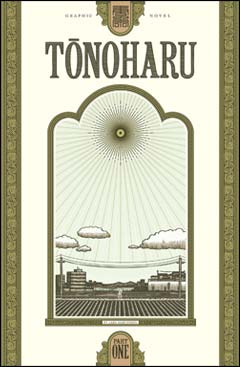 There’s a nice review of JET alum Lars Martinson’s graphic novel Tonoharu: Part 1 on the BoingBoing site written by Mark Frauenfelder titled “Tonoharu: Excellent graphic novel about an English teacher in Japan.” And according to Lars’ blog,
There’s a nice review of JET alum Lars Martinson’s graphic novel Tonoharu: Part 1 on the BoingBoing site written by Mark Frauenfelder titled “Tonoharu: Excellent graphic novel about an English teacher in Japan.” And according to Lars’ blog,
“Thanks to Mark Frauenfelder’s writeup about Tonoharu: Part One on Boing Boing, the book has made it into Amazon.com’s Top Ten Bestselling Graphic Novels today!”
Here’s the link to the review: http://www.boingboing.net/2010/08/27/tonoharu-excellent-g.html
Here’s a quote from the review:
“Published in 2008, and a winner of the prestigious Xeric Award, Tonoharu is a story of isolation, frustration, and mystery, with just the right amount of black humor to keep it from being depressing.”
For fans awaiting the next installment, Tonoharu: Part 2 is due out in December.
Notable JET Alums: Aaron Woolfolk’s “The Harimaya Bridge” wins at Pan African Film Festival
Aaron Woolfolk (Kochi-ken, 1991-93), director and writer of the Kochi-based film, “The Harimaya Bridge,” recently won a director’s award at the 2010 Pan African Film Festival.
Click the link below to read the article and learn more about Aaron and his acclaimed film.
http://www.indybay.org/newsitems/2010/08/12/18655970.php



